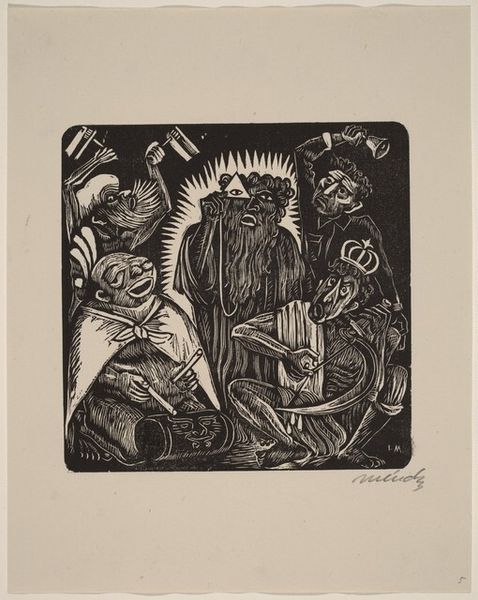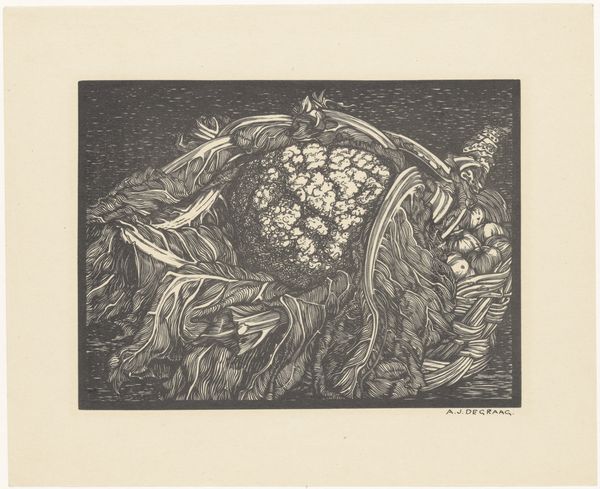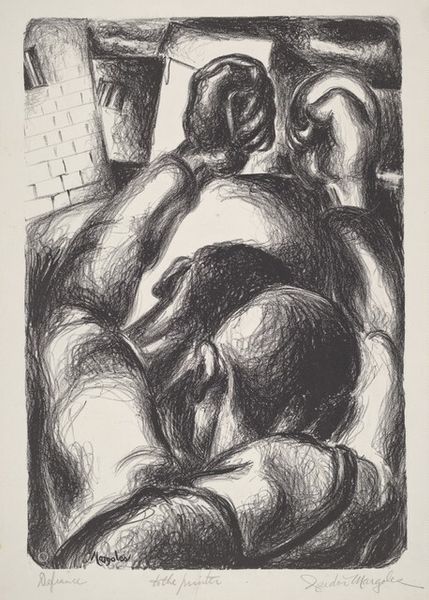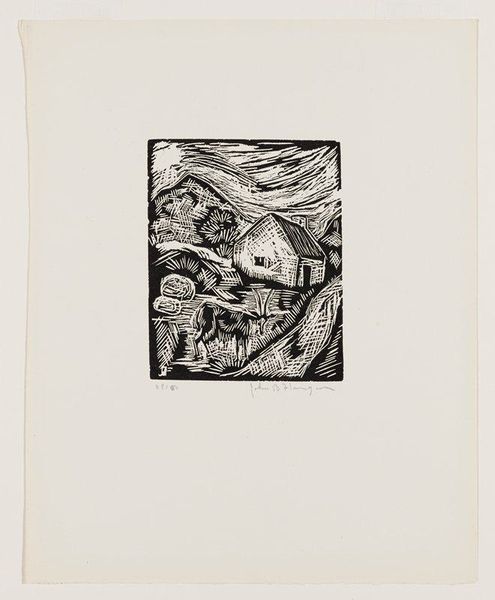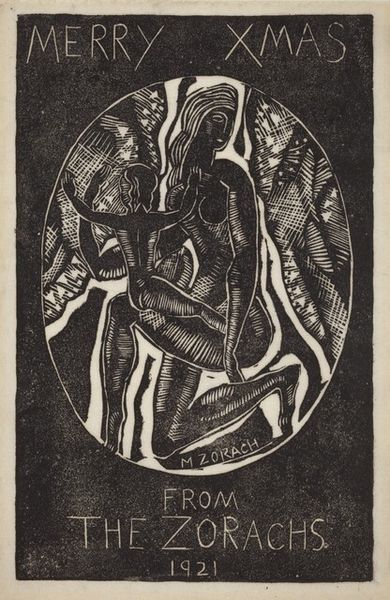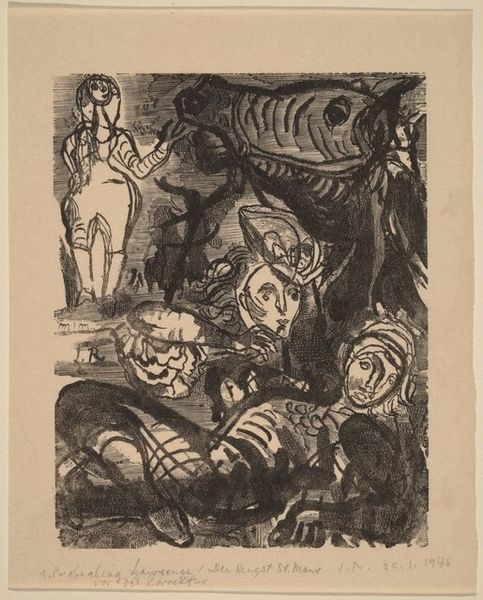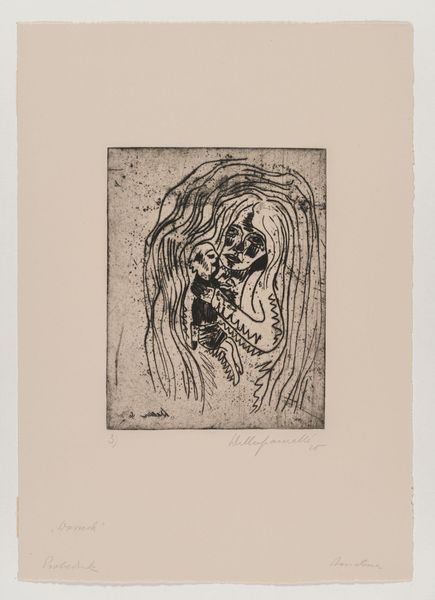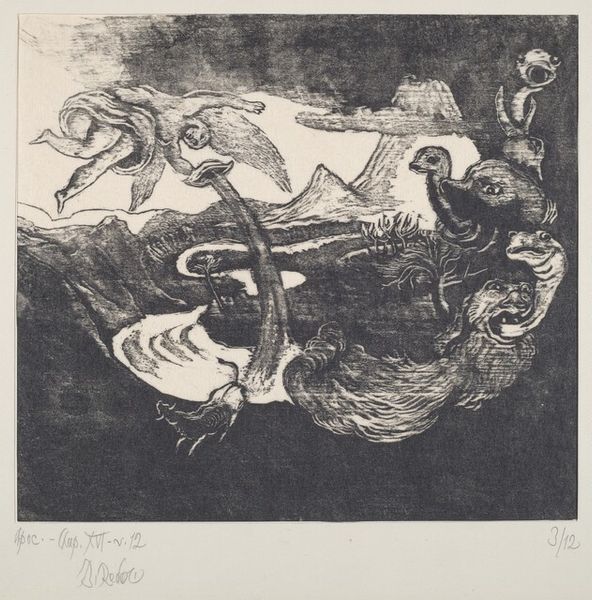
graphic-art, lithograph, print
#
graphic-art
#
lithograph
# print
#
modernism
Dimensions: 10 5/8 x 8 1/4 in. (26.99 x 20.96 cm) (image)
Copyright: No Copyright - United States
Curator: Let's spend some time with "Squash," a lithograph created in 1926 by Wanda Gág. It's currently held in the collection of the Minneapolis Institute of Art. Editor: The contrast between the black background and the intricate details of the vegetables is immediately striking, creating an almost dramatic still life. The composition feels both abundant and somewhat claustrophobic. Curator: Gág was known for her modernist prints and drawings. Her work often explores themes of nature, sensuality, and, notably, social commentary, particularly concerning the role of women and working class in American society. In the context of the roaring twenties, "Squash" hints at complex and, possibly, critical dialogues that address identity through materiality and cultural habits. Editor: That's fascinating! Knowing this was produced during the 1920s enriches the viewing experience considerably, layering it with notions of labor and gender dynamics during the Interwar. This isn't just squash. These vegetables, rendered with such care and detail, feel almost like portraits—evocative representations of that reality. Curator: It's also important to consider her background; she lived through significant societal and political changes. Gág observed the shift toward industrialization, the struggles of the working class, and also the social expectations for women. "Squash" embodies Gág’s own artistic struggles for validation as a woman, who did not follow conventional artistic models that had relegated women to specific genre expectations such as portraiture and botanical illustration. Editor: Absolutely. You are very right about that; what some could reduce to a banal still life contains multitudes. I’m drawn to think of this composition in conversation with other of her compositions featuring natural subjects from that time, such as "Growth," a beautiful example that emphasizes the female condition to be closely tied with land and body. Curator: Indeed, thinking about her prints as part of broader conversations about gender roles helps to give dimension and contemporary relevance to what some might consider a simple vegetable rendering. The details offer complexity when we engage deeply and recognize historical context. Editor: Exactly! This perspective has reshaped how I view the work. Thank you for this insightful discussion. Curator: Thank you. The dialogues between historical, political, and aesthetic considerations always create deeper understanding.
Comments
minneapolisinstituteofart almost 2 years ago
⋮
It’s hard to miss the curving embrace of the forms in this still life, a genre Gág saw as anything but still. When her diaries were made available for the first time in 1987, there were several entries about how her sensual nature fueled her creativity. The strongly contrasting lights and darks reflect Gág’s tendency in the mid-1920s to draw at night, when her only illumination was often the harsh light of a kerosene lamp.
Join the conversation
Join millions of artists and users on Artera today and experience the ultimate creative platform.
